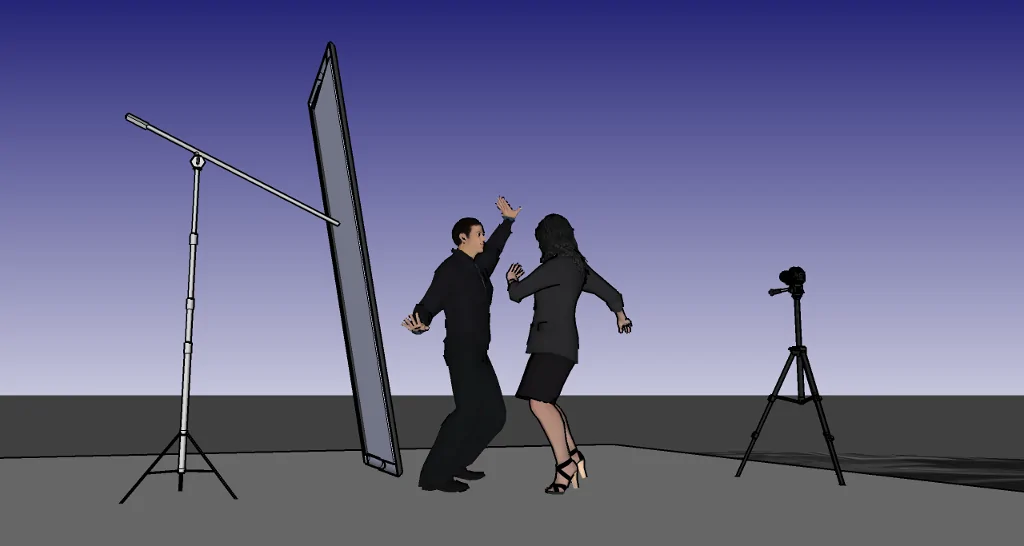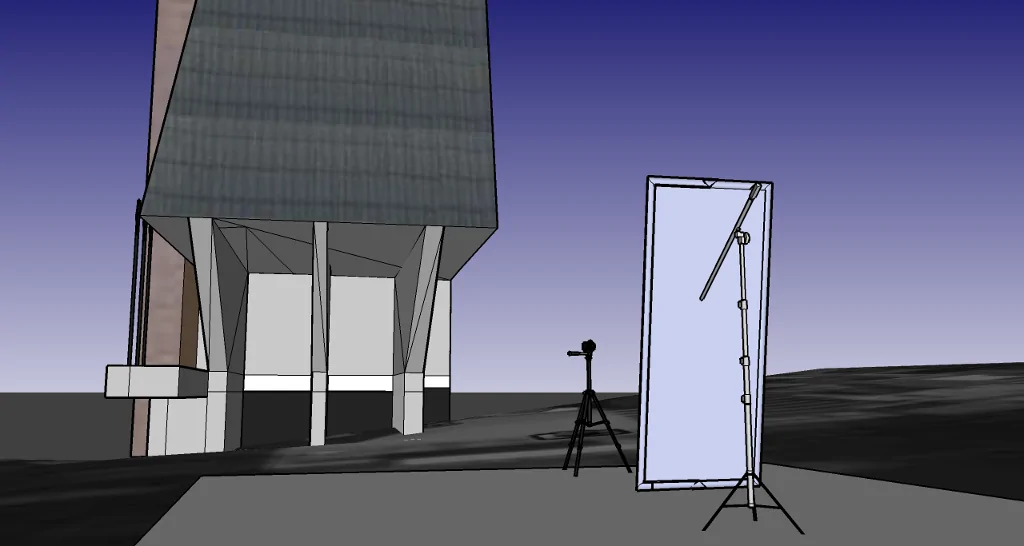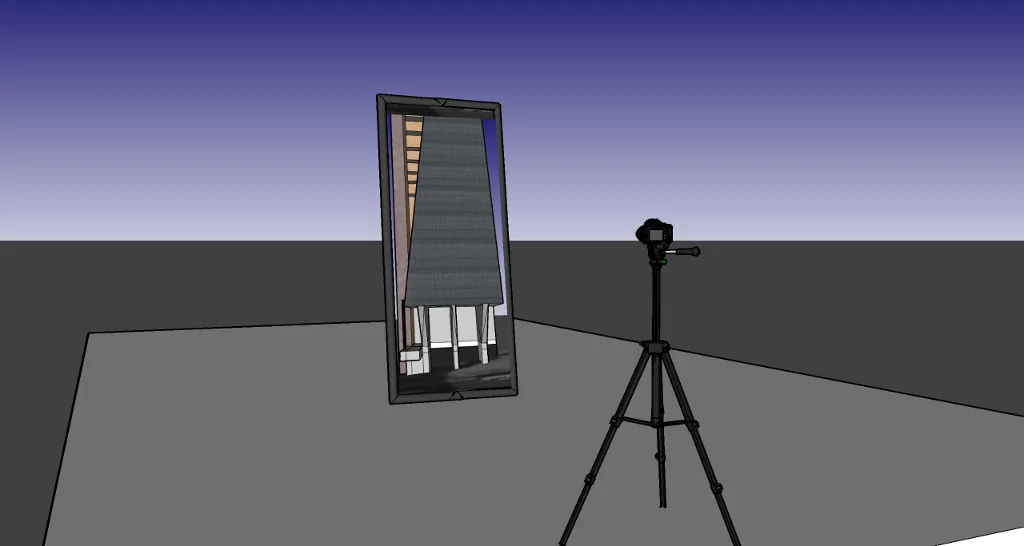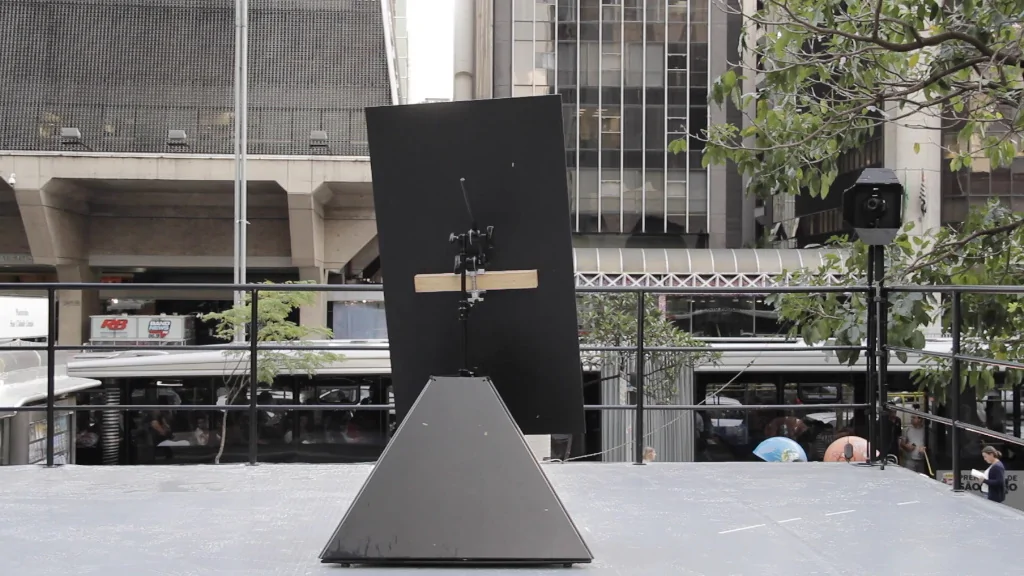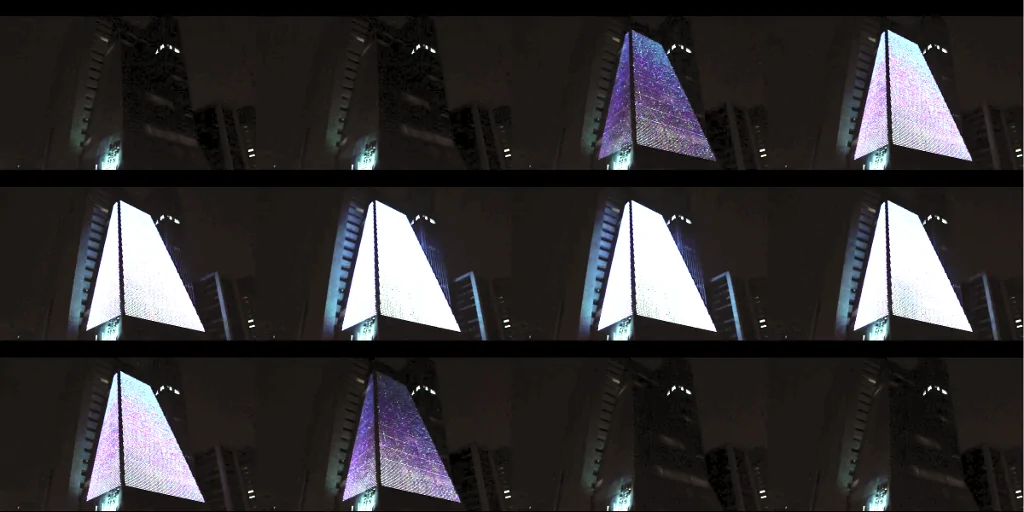
As we keep racing to make our communication devices better, faster and smaller, how can we make sure our interactions still impart a sense of uniqueness and specialness for the people involved, and that our personalities don’t get optimized out of our own communication processes?
Can we use physical spaces to give significance to otherwise commonplace exchanges by creating collective experiences that live beyond their immediate production/consumption cycle?
0.25 FPS is a public art installation that promotes a more subtle and physical kind of interaction. It is inspired by a very analog and classic version of a visual illusion, namely, the short-term blindness that results from having your picture taken with a strong flash. The intent of this installation is to use an entire LED façade as a flash, and provoke the audience to create their own narratives and meaning from such brief stimulation. In an almost paradoxical attempt to saturate the audience with small amounts of information, we hope to create a different kind of interaction with the participants; one that lasts well after the initial flash has happened.
The installation consists of a camera and a mirror placed in front of a building with an LED façade. The camera faces the mirror, which reflects the building. The camera is programmed to automatically take a picture of the building, through the mirror, every couple of seconds, even when no one else is around. Every time a picture is taken, the building flashes white, synchronized with the camera’s flash.
As a public art intervention, this project is a kind of homage to other forms of technology-mediated communications, like architecture and photography. On the one hand, this project can be seen as a minimalist sculpture and site-specific installation made up of a camera, a mirror and a building, where the building’s narcissistic tendencies reflect our own desires for self-promotion and self-importance accelerated and propagated by technology. On the other hand, the work is an open platform that invites direct participation and creates an opportunity for playfulness, social interaction and collective communication through the use of a simple interface that nonetheless transforms and reinterprets the urban landscape. It is an experience, without being a spectacle.
2016: UnFollow, FACT - Liverpool, UK
2014: SP_Urban, FIESP - São Paulo, BR
